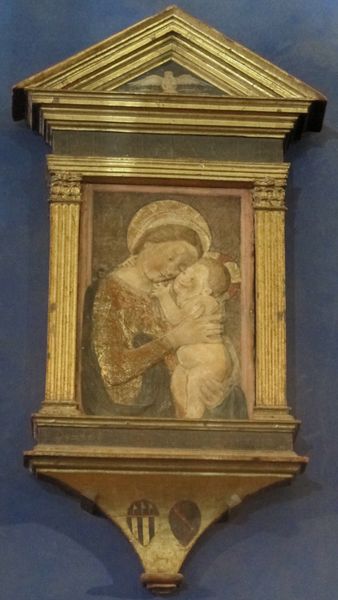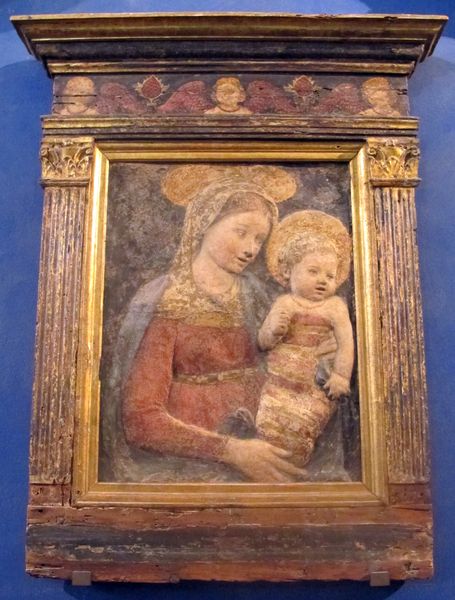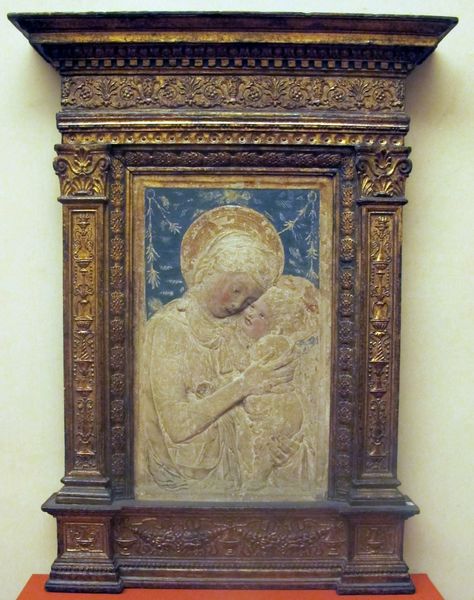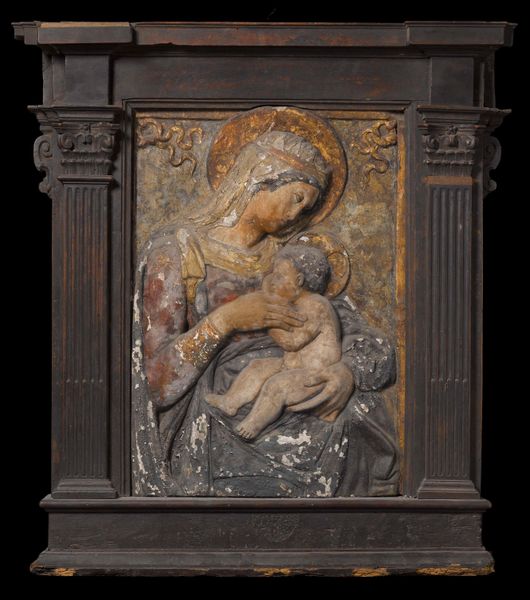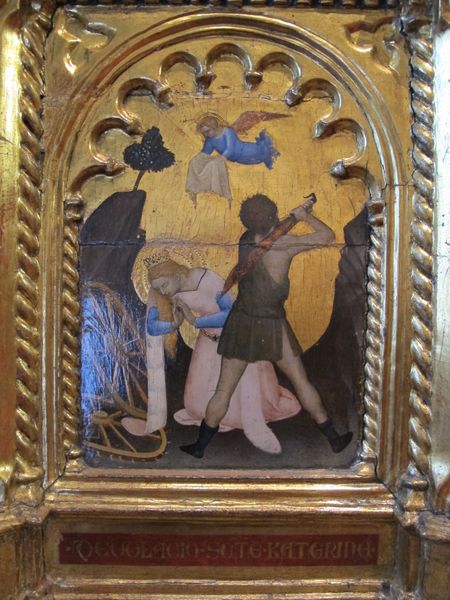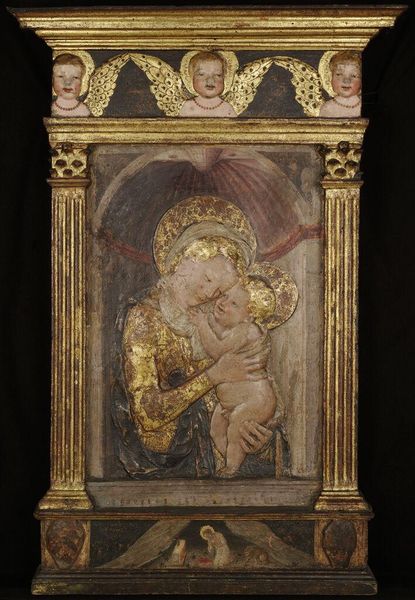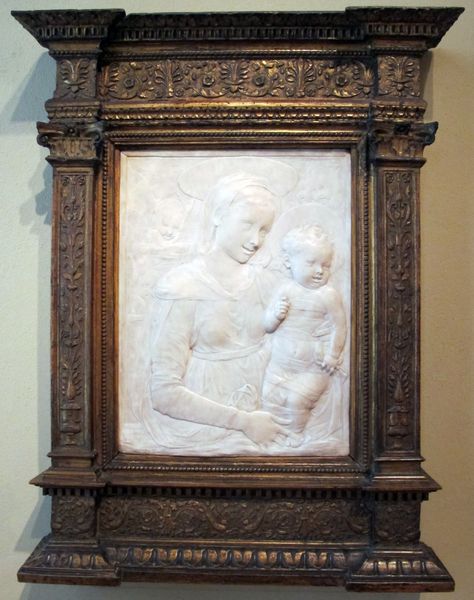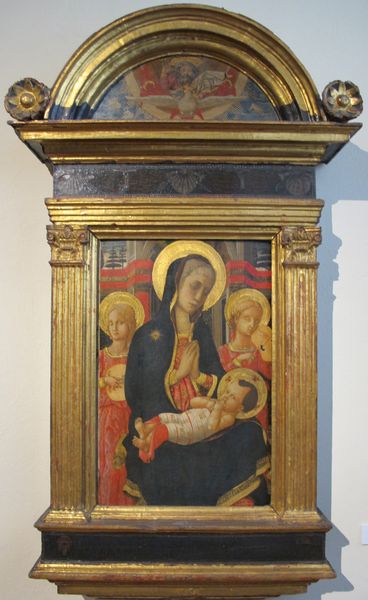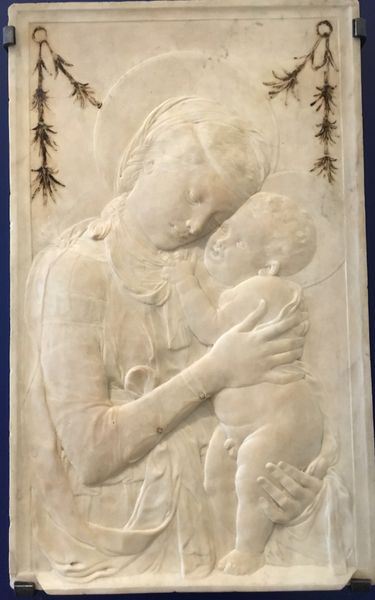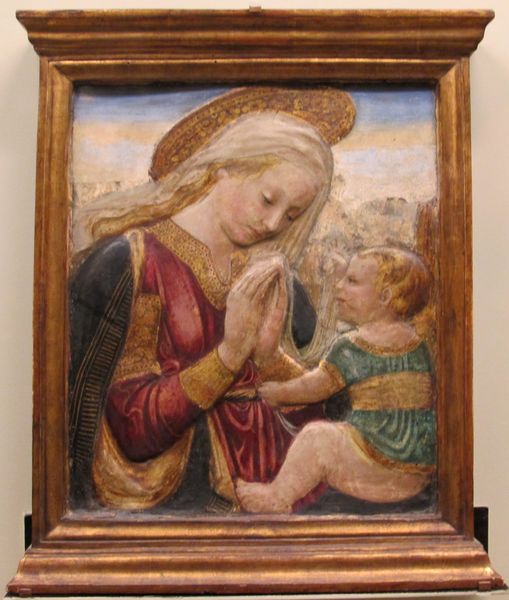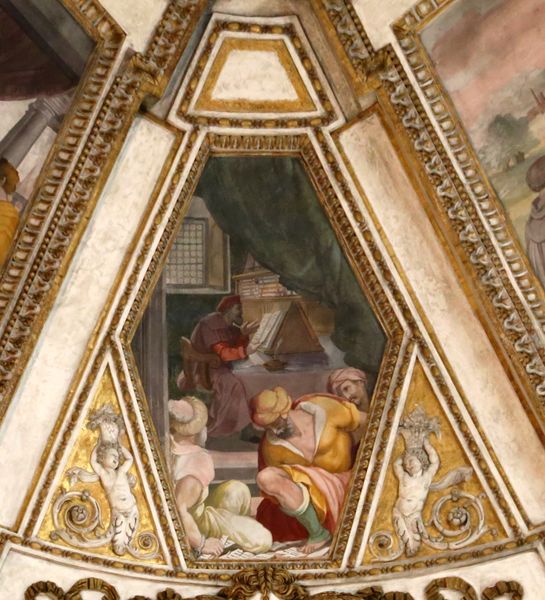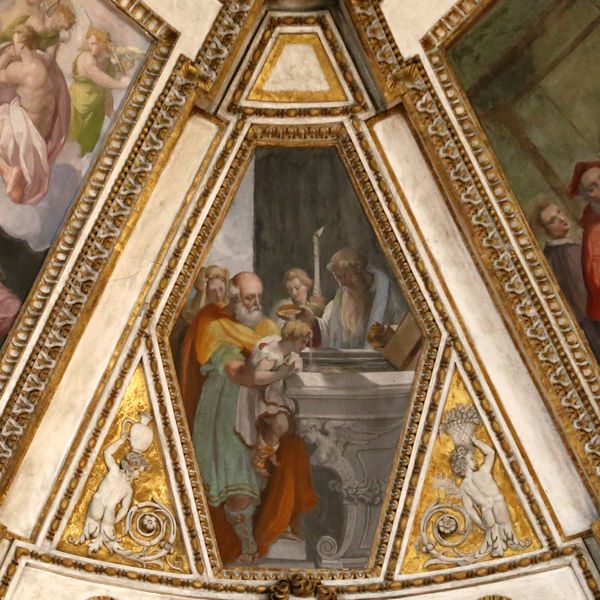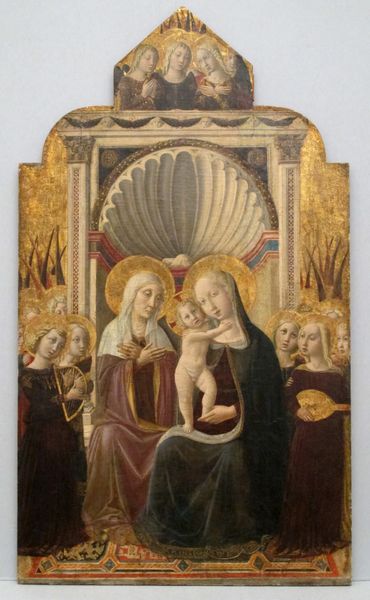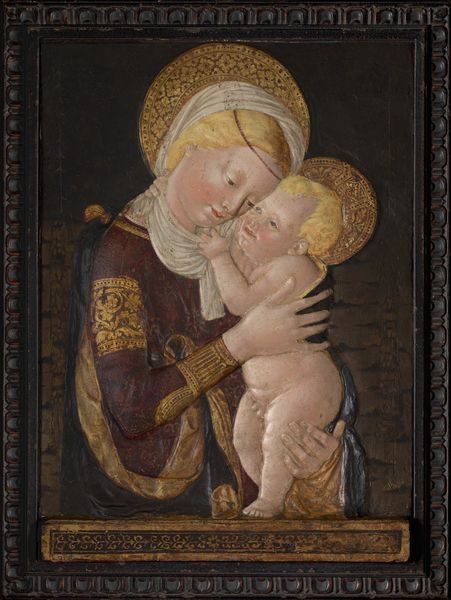
tempera, painting
#
portrait
#
tempera
#
painting
#
figuration
#
italian-renaissance
#
early-renaissance
Copyright: Public domain
This is "Adoration of the Child" by Desiderio da Settignano, an Italian Renaissance sculptor who worked with marble and other materials. The Madonna's tender gesture of adoration, hands clasped in prayer, echoes through centuries of religious art, embodying humility and devotion before the divine. The golden halos surrounding the figures are visual symbols signifying holiness and divine light, a convention that reaches back to early Christian mosaics and Byzantine icons. Yet, even in antiquity, the halo was used to signal a divine or heroic status. Consider the sun disks that adorn depictions of pagan gods. This motif recurs across cultures, revealing a persistent human desire to visually mark sacred individuals. Such imagery touches upon our collective memory, resonating with deep-seated beliefs about the sacred. The act of adoration itself speaks to a powerful psychological dynamic: the human need for reverence and connection to something greater than oneself. This act is charged with emotion, engaging us on a profound, subconscious level. The halo, like the act of adoration, follows a non-linear path through history, transforming yet retaining its essence, a testament to the enduring power of symbols.
Comments
No comments
Be the first to comment and join the conversation on the ultimate creative platform.
